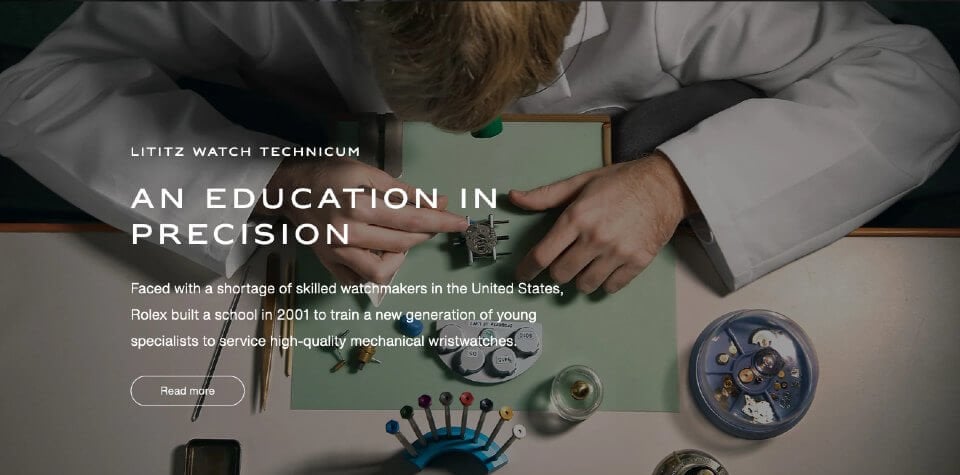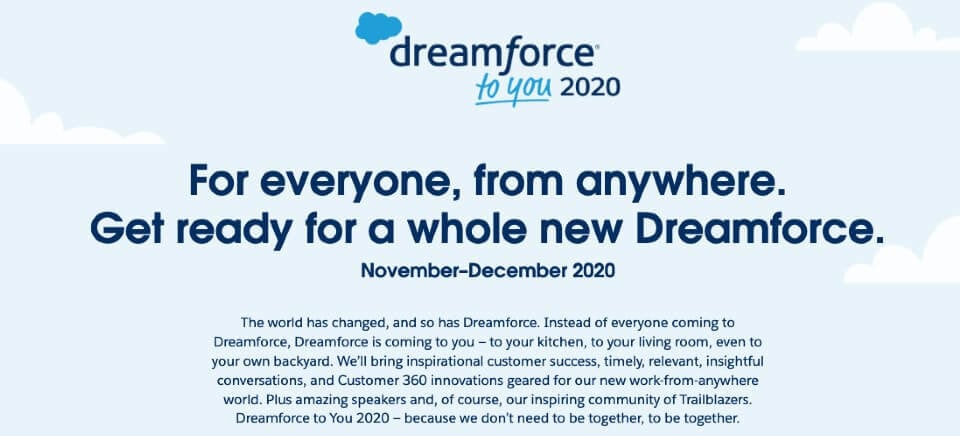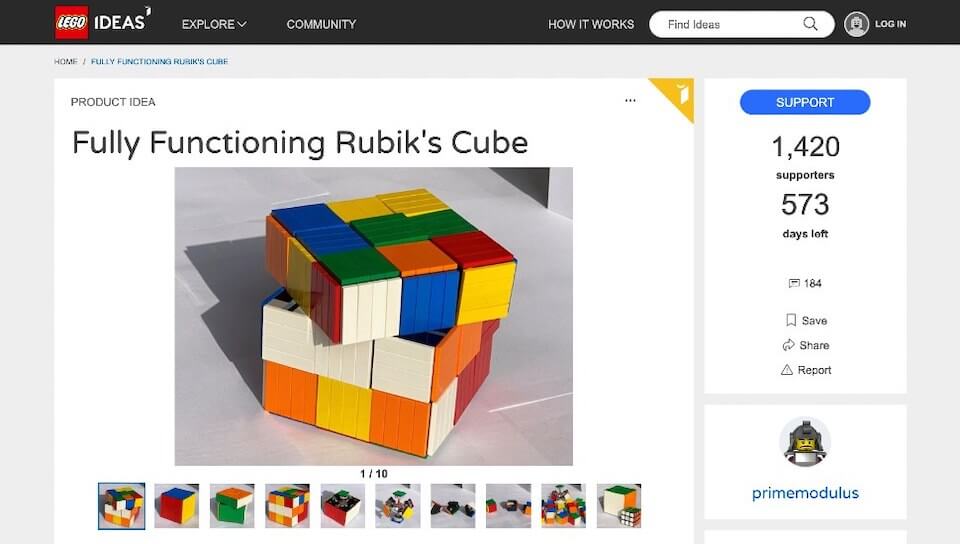
30 Ways to Increase Website Traffic & Drive Results
Nov 20, 2020|Read time: 27 min.
Key Points
- All things equal, more qualified traffic equals more leads, customers, and revenue.
- There are various ways to increase website traffic, from tapping into audience insights to utilizing digital marketing vehicles to exploring a range of offline tactics.
- Discover 30 ways to drive traffic to your website to help you unleash new business growth.
As marketers, we love more eyeballs on our brand. More eyes means more attention. And the best way to get that attention is to increase website traffic. All things equal, more qualified traffic equals more leads, customers, and revenue.
But you don’t just want more traffic. You want to get the right traffic from your target audience.
In this post, I’ll cover 30 different ways to grow website traffic and unleash new organic growth. Some of these methods will help you understand your audience better. While others focus on digital marketing vehicles such as SEO, content marketing, and paid media.
I’ll also explain how to increase website traffic through offline tactics such as guerrilla marketing and strategic partnerships.
Let’s get started!
How to get traffic to your website
1. Audience insights
When you understand your audience, you are able to speak more effectively to their interests, desires, objectives, struggles, and pain points. You can create content that speaks the language of your potential customers and generates more clicks on search results and social posts.
So how do you get deep insights into your audience? There are a number of tools and tactics that are helpful, including:
- Market research – Analyze search and social data, dive into competitor analytics, conduct interviews, work with focus groups, or work with market research consultants.
- Survey current customers – Ask your customers to tell you both how you help them and ways you could improve.
- Context-specific surveys and polls – Use contextually relevant surveys/polls on different pages of your website to get real-time information about what your customers need help with.
- Chat with your support team – Your customer support team is on the front lines of helping customers. They can give you valuable information about the problems your audience is dealing with.
- Talk with sales – Ask your sales team what solutions and features your audience is asking for. Uncover any initial objections prospective customers tend to raise, as well as your sales team’s messaging for overcoming those objections.
- Use Google Analytics – Look at the pages that already get website traffic and replicate their success. Are they ecommerce pages or blog posts? Do visitors come from Google or social networks?
2. Map the customer journey
In order to get more traffic to your site, have a clear understanding of the customer journey through the decision funnel. This can cover everything from the time they first become aware of an opportunity or problem to when they decide to purchase from you.
Customer journey mapping helps you create content that moves buyers through the conversion funnel.
For example, say you sell running shoes. Someone who just started running probably doesn’t know what kind of shoes they want. You can create guides, videos, and articles that help them understand the different types of running shoes.
Once they have a better understanding of what to consider in a running shoe, offer quality content and tools that help them compare options and choose the best pair for their particular feet, running style, circumstances, or goals.
Customer Journey Map Template
Create better journey maps to reveal consumer needs.
3. Target the right keywords to increase website traffic
One of the most effective and sustainable ways to get traffic to your website is through SEO. Google itself states in its Economic Impact Report that SEO ROI is 5.3x compared to only 2x for paid.
Keyword research
Your customers will search for different keywords depending on where they are in the decision funnel. Searches at the top of the funnel are usually broader than those at the bottom.
For example, someone in the awareness stage might search for running shoes since they’re not yet familiar with the brands or products.
A person in the consideration phase will be more specific. So, they might search for the best trail running shoes for men.
Someone further along the funnel might Google Nike Air Zoom Tempo vs Hoka Challenger ATR 6, or Nike Air Zoom Tempo reviews.
Finally, someone on the verge of a purchase at the bottom of the funnel may search for Nike Air Zoom Tempo free shipping.
For each phase of the customer journey, create a list of keywords that your customers will be searching for. Use a tool like Ahrefs Keyword Explorer or Google Trends to identify valuable long-tail keyword variations, too.
As you look at the keywords, consider:
- Search volume
- Search intent
- Keyword difficulty
- Your website’s organic search performance on related keywords
- Number of linking root domains you may need to reach page one
- Domain Authority or Domain Rating of the websites ranking on page one
Read my article about intent-based keyword targeting if you want a fresh perspective on search intent.
Build topic clusters and pillar pages
After you identify your top keywords, strategically group them into topic clusters. If you aren’t familiar with that strategy yet, read my post about what topic clusters are and why they’re about to make a huge comeback in the SEO world.
In short, content clusters organize your content into buckets of relevance. You create a single high-level content hub called a pillar page which links out to various subtopics. Collectively, topic clusters are an incredible way to increase website traffic throughout the entire buyer’s journey.
Topic Cluster Template
Organize topic clusters to maximize reach and optimize content strategy.
4. Answer valuable questions to increase traffic to website pages
One of the best ways to grow website traffic is to answer the questions potential customers ask. When you thoroughly answer the right questions, you increase the amount of time visitors stay on your site and decrease bounce rate.
Additionally, you have a chance of showing up in the featured snippet in the organic search results, which can generate a large amount of traffic. One prominent example is the beauty website Byrdie. They dominate the search landscape throughout the funnel with well-crafted content that answers users’ questions.
Read our article to find out how Byrdie toppled billion dollar beauty brands without ads.
There are a number of tools that can help you identify the specific questions your audience is asking online, including:
- Answer the Public lets you type in a keyword and then it will spit out a long list of related questions.
- BuzzSumo allows you to search millions of forum posts like those found on Quora and Reddit to find real questions people are asking.
- Question Hub is a new tool by Google that reveals all the unanswered questions people search for on the web.
Once you identify the right questions, work hard to answer them on your website.
5. Technical SEO
When exploring how to get traffic to your website, website architecture might not be the first thing that comes to mind. But, it’s pretty important. Technical SEO ensures that your website is as Google-friendly as possible. That means structuring your site so that Google understands what it’s about and can crawl each URL efficiently.
First, submit an XML sitemap to help search engines find and index your content. Organize your pages in a logical structure that is relatively flat and easy for users to navigate. As much as possible, make all content accessible within three clicks.
A tool like Screaming Frog or ContentKing can help you detect and fix any crawl errors. It can also help you locate and fix broken links.
Use canonical tags to help Google understand exactly which pages it should crawl and to avoid duplication errors. If you’ve changed the URLs of pages, ensure that you have proper 301 redirects in place.
Remember, Google prioritizes speed, and they’re rolling out a user experience update in the first half of 2021. So, use web speed testing tools such as Google’s PageSpeed Insights, Google Lighthouse, or Pingdom to uncover opportunities to improve page load time.
Also, where possible, implement structured data to increase the odds of your pages showing up in rich snippets.
6. On-Page SEO
On-page SEO is the process of ensuring that each page is properly optimized for maximum organic search rankings. There are a number of specific steps you should take when optimizing web pages, including:
- Map each page to a specific primary keyword.
- Use URLs that are simple, clean, easy to understand, keyword-rich, and follow a logical path.
- Include your keyword early in the title tag, and make the title as compelling and clickable as possible.
- Make your meta description compelling and descriptive so that when people read it they want to visit the page.
- Use headings (H1, H2, H3, etc.) to organize your content and make it more readable. Try to include the target keyword in at least one or two headings.
- For the top ranking content in Google page one for the target keyword, identify the other, related keywords for which such content is also ranking on page one. This will provide you with additional, secondary keywords that you can target.
- Optimize body copy by sprinkling in both your primary and long-tail keywords throughout.
- Use relevant internal links and external links to help search engines understand how the page relates to other pages on your site and external sites.
- Give images descriptive names and appropriate alt tags.
Read our article about how to create an unstoppable SEO strategy.
On-Page SEO Checklist
Get Terakeet’s checklist for on-page optimization and copywriting.
7. Improve your Google SERP click through rate
Do you already have a lot of keyword-focused content? Then you may be able to get more website traffic just by improving your click through rates from the search engine results pages (SERP).
The higher your organic search rankings, the higher your click through rate, and the more traffic you’ll win.
To find pages where the CTR is underperforming, use Google Search Console. Look for keywords and pages with a high number of impressions and low number of clicks. Is the title tag aligned with search intent? Rewrite the titles and meta descriptions to improve keyword rankings and make them more compelling.
Use words that will match the search intent and help users know that your page has the information they’re looking for. Look for ways to differentiate the messaging in your listing from the others on the page. When appropriate, use modifiers (“definitive”, “essential”, “unique”, etc.) to help you stand out in the SERPs.
8. Get backlinks with off-page SEO tactics
Backlinks are a critical ranking factor in Google’s eyes. The more high-quality links a page has, the more relevant and authoritative it will appear to be. If you want to rank higher and increase website traffic, build as many high-quality backlinks as possible through strategic outreach.
Our off-page SEO guide covers the most effective ways to get backlinks, so it’s definitely worth a read.
It’s important to remember, however, that not all links are equal. The best links are both relevant to your site and high authority. If you sell IT services and get a link from a local pizza place, that won’t do your site much good. Google may even see it as an attempt to game the system and penalize you for it.
How can you acquire these types of backlinks? Here are a few strategies from the guide I linked to above:
- Create link-worthy content that provides massive value.
- Write guest posts on trustworthy websites.
- Get interviewed in popular publications, blogs, and on podcasts.
- Conduct unique research.
- Ask for backlinks when someone mentions your brand naturally.
- Partner with influencers, bloggers, and relevant publications.
At its core, link building is all about building valuable relationships. When you consistently add value to those around you, they’ll be more than happy to link back to your site.
9. Increase website traffic with content marketing
Content marketing is defined as the process of creating and distributing highly valuable, relevant content to a wider audience.
Specific content marketing examples can include everything from blog posts to bylines, podcasts, videos, ebooks, lookbooks, infographics, SlideShares, research reports, and more. Choose formats that make sense for your audience. Enable them to get the answers they are looking for or the entertainment value they seek.
There are so many benefits of content marketing that go beyond just traffic that it’s hard to argue against investing in this tactic.
Content Strategy Playbook
The Fortune 500 CMO’s guide to content strategy.
How to get traffic to your website with content marketing
Some brands go above and beyond to create an amazing experience for their users which naturally attracts an audience. For an excellent ecommerce content marketing example, let’s look at the Rolex websites.
Their main website has tons of great content, including long-form copy, stunning photography, and high resolution video about their products. The site even has a wallpaper gallery for your computer and interviews with famous figures.
But, the brand really shines on Rolex.org. Here, they publish narrative-rich content, including the company’s founding story and explorations into science and the environment.

Additionally, The Rolex Awards honor individuals making the world a better place through innovation or through tackling societal challenges. The Rolex Mentor and Protege Arts Initiative helps to ensure that important cultural knowledge is passed on from generation to generation.
So, as you develop your content strategy, be quite creative, and don’t restrict yourself to selling products. When you regularly produce and promote great content, you’ll drive up engagement and increase website traffic.
10. Use video marketing to increase website traffic
Marketing through video is on the rise as it becomes much easier to produce and edit videos with nothing more than a smartphone. Video SEO helps you gain greater visibility in YouTube and the main Google SERPs, and for your own web pages when the videos have been embedded.
Additionally, videos tend to perform well on social media platforms, getting significantly more engagement than other types of posts.
Video marketing allows you to uniquely show off your brand personality in a way that other online marketing strategies don’t. You can take people behind the scenes of your company and authentically communicate with your audience.
HubSpot has successfully used video as a growth marketing strategy. They’ve produced over 1,000 videos on YouTube, many of them not directly related to their product but simply trying to help their audience better understand marketing.
Target, too, produces an endless flow of videos (39 unique videos in the past month alone at the time of this writing!), often in a fun, tongue-in-cheek way. The company’s “More Ways to Enjoy” video series outlines the many different uses for the products they sell.
Most of the videos are offbeat. It’s a refreshing and imaginative twist on straightforward product details. Another good example of Target’s video marketing is its “Let’s Target” video series, in which Hollywood stars call their friends and teach them something new.
11. Leverage podcasting to increase website traffic
Podcasting is an excellent way to increase website traffic and build a brand. What makes podcasting unique is that you can deliver valuable, longform content without spending a huge amount of time or effort.
Podcasting can consistently capture an audience’s attention for 30+ minutes at a time. Better still, the medium is far from hitting its content saturation point. So, there’s plenty of opportunities for marketers to build thought leadership, establish repeated customer touch points, and forge a relationship with your audience.
Schwab produces a number of different podcasts serving different purposes. The Daily Market Update podcast delivers a summary of each day’s trading and financial news, including major stock announcements. On the more creative side, Schwab also publishes Choiceology and the Financial Decoder, and the WashingtonWise Investor podcasts.
Choiceology with Katy Milkman looks at the world of irrational decision making, exploring the lessons of behavioral economics. During each episode of the Financial Decoder, a deep-dive review of just one featured financial decision is conducted—along with the biases that might cloud one’s judgment. WashingtonWise Investor covers the policies and politics coming out of Washington that matter most to investors.
If your brand has yet to launch a podcast, it’s not too late to start a show that can gain a significant and loyal following. To get even more traffic to your website, incorporate episodes into your blog strategy, beyond the standard podcast broadcasting sites.
12. Use webinars to get traffic to your website
Webinars are a time-tested, proven strategy for increasing website traffic, connecting with your audience, improving engagement, and building a successful brand. They allow you to demonstrate your expertise on a particular subject while also helping your audience solve common problems they struggle with.
Webinars are especially effective when a deeper-dive education is necessary. They also are a great way to capture new leads and show off a particular product or service.
Dassault Systems, a multi-billion dollar 3D experience solutions provider for product design and development, frequently publishes new educational webinars. In its library, it offers more than 500 webinars and recordings to site visitors. It’s an engaging way of attracting new customers and retaining existing customers for the complex solutions it offers.
13. Host events
Live events (and virtual events) are a great way to connect with those in your industry as well as potential new customers. There is something about talking with people live that can’t be replicated by ads or podcasts or email marketing. Hosting live events allows you to build important relationships while also creating a memorable experience for those in attendance.
The promotion of the event itself can drive a great deal of traffic to your site or landing page. Plus, you can easily turn the event content into evergreen material for your website. For example, you can make videos and slide decks of the presentations available or run a webinar that provides snapshots of what was presented.

Salesforce is an example of a company that has effectively leveraged the power of events with their Dreamforce annual conference. Attendance has reached 170,000+. The event web pages have garnered more than 337,000 “dofollow” backlinks, which in turn has helped the pages to rank in Google for more than 6,000 keywords. All of this, of course, results in more and more organic site traffic for Salesforce.
14. Sponsor events
Sponsorships are another way to leverage events to increase website traffic.
Sponsoring industry-related events is a relatively simple way for you to get your name in front of your core audience. One of the benefits of event sponsorship is that the event organizers will conduct a great deal of promotion, including the promotion of your brand. It’s a way to expand your reach through the power of the event organizer’s highly valuable database of contacts.
Depending on the event, you may have a number of unique ways to capture the attention of attendees. Maybe you create a landing page on your site with a free download just for attendees. Or maybe you give away branded swag that attendees will actually want to use.
While there certainly will be some cost to sponsor an event, the payoff in new traffic and leads can be substantial.
15. PR
A good PR campaign can bring a ton of traffic to your site. When done well, PR cuts through all the noise to increase brand awareness and enhance reputation. It captures people’s attention and gets them talking about your business in positive ways. With great PR, your brand is top of mind. It also can help establish your brand as trustworthy and authoritative.
These things matter to Google. When they see a flurry of positive off-page SEO signals, like brand mentions and backlinks, it’s a signal to them that your company is important and should probably rank higher in relevant search results.
There are dozens of ways to generate buzz for your brand through PR, including events, publishing opportunities, community engagement, guerilla marketing campaigns, and being interviewed by the media.
Newsjacking is another way to garner attention. For example, if you’re a home security system brand, perhaps you jump into the conversation with your perspectives when high-profile home break-in stories are in the news.
You’re limited by only your creativity.
Forrester Study White Paper
See how fully integrated SEO drives business impact across the enterprise.
16. Deploy social media to increase website traffic
With billions of daily active users, social media is an obvious method of driving traffic to your site. This is especially true of your existing customers and fans.
When crafting your social media strategy, there are a few important things to think about.
First, you need to know which platform your audience uses most. If you’re a B2B business, LinkedIn might be your best bet. If your audience is Millennials, knowing how to sell on Instagram is probably a solid option. Targeting GenZ? Then consider TikTok.
Second, it’s critical that you provide real value to your followers and regularly engage with them. You can’t just publish links to your site and expect people to come. You need to understand what’s on their mind, actively connect with them, offer them unique content, respond to comments, answer their questions, etc.
17. Strategic partnerships
Build strategic partnerships with other brands, organizations, and groups to expand your audience as well as increase website traffic. When you partner with others, you get access to their audience and they get access to yours. Suddenly, you’re in front of a new pool of potential customers. It’s a way to double your audience with half the effort. Plus, you can augment the benefits when you add referrals to one another through the process.
What’s more, depending on what you and your partner create, you may receive a number of mentions in the media, backlinks, and online shares. Need proof? Look at when Red Bull and GoPro teamed up to have Felix Baumgartner jump from a platform more than 24 miles above the Earth. The video got more than 46 million views and generated tons of press for both companies.
Of course, your partnerships don’t need to be quite that outrageous. Simple ways to partner include doing joint webinars or podcasts, collaborating on videos, guest blogging, or organizing a joint launch. The only criteria is that you both be able to add value to each other.
18. Get website traffic with influencer marketing
When you think of influencer marketing, you probably envision photogenic people on Instagram posting pictures of themselves at the beach or atop mountains. And while it certainly includes that, it’s much, much broader.
The truth influencers exist in literally every industry, including marketing, IT, beauty, gardening, and HR. Some have millions of followers while others have only a few thousand.
However, micro-influencers often drive more measurable outcomes than big name celebrities. That’s because they typically have much more passionate and engaged followers.
Micro-influencers spend a great deal of energy on cultivating trust with their followers. So, they have deep insight into what your audience is interested in and what they’ll respond to. To that end, use micro-influencers upstream to uncover important insight. Then, collaborate with them on new creative ideas from social media marketing to giveaways.
When you collaborate and build a relationship with influencers, it can lead to an influx of traffic and leads.
19. Guerrilla marketing
How to drive traffic to your website through offline tactics? With guerilla marketing, you utilize unconventional, creative, relatively low-cost techniques to capture people’s attention in surprising ways. Good guerilla marketing gets people talking about your brand and often results in media coverage and heightened social media activity.
For example, Nike has conducted a range of guerilla marketing stunts, including the branded park bench missing a place to sit. Perfectly in line with Nike’s mantra that everyone is an athlete and should be out moving their bodies.
TD Bank created a video in which they surprised customers by transforming one of their ATM machines into an “Automated Thanking Machine,” giving customers everything from flowers to trips to Disney. One Toronto Blue Jays fan was given the gift of throwing out the first pitch at a game. One mother was given plane tickets to go see her cancer-stricken daughter in Trinidad.
(I’m not crying. You’re crying.)
The results of the guerrilla marketing campaign? The video has racked up more than 24 million views. It was shared 460,000 times within the first 72 hours of its release, and ever since TD has received a whole heaping of brand love.
20. Increase website traffic with PPC
When considering ways to increase website traffic, you may fall into the trap of binary thinking that the question of SEO vs. PPC is an either/or proposition. When it comes to maximizing your traffic from the search engines, though, it’s more a question of how to use each to their advantage.
Organic search is more profitable over the long run than PPC, which tends to have a high acquisition cost. SEO is a great evergreen strategy for your target keywords.
PPC has its place in your marketing mix, as well. For example, for new products, categories, or topics, you can use PPC to get more website traffic until your SEO kicks into gear.
You can also use PPC to occupy more real estate in the SERPs for branded terms, with the intention of dominating the page.
With PPC, you can start driving traffic immediately. To that end, PPC is effective for short-term initiatives or for testing new ideas and messaging. If you’re doing a holiday push or running some sort of promotion, PPC may be your best bet.
21. Display advertising
Like paid search, display advertising can give you a quick infusion of traffic.
Display ads can be especially helpful if you’re trying to build brand awareness or retarget those who have already visited your website.
There are a number of specific targeting options that can help you get in front of your ideal audience. Using a DSP, you can choose specific keywords, interests, topics, or demographics to target. Or you can target specific websites if you know exactly where they go online.

22. Native advertising
Native advertising allows you to create ads that match the format of the platform on which they’re placed. A good example of native advertising is a text-based call to action in the middle of a blog post, or a sponsored YouTube video in your feed.
One unique advantage of native advertising is that it can help you catch the attention of people who ignore display advertising. The key to success with native advertising is that the content is contextually relevant and adds value to the audience.
For example, IBM partnered with The Atlantic to produce a four-part series about the intersection of sports and technology. The series feels like something The Atlantic would write and is genuinely interesting. There’s no specific call to action, but it certainly raises the profile of IBM and the work they’re doing.
23. Paid social
Piggybacking off of the popularity of social media, paid social advertising can give you a surge of traffic on demand. That’s very helpful if you need to build awareness, promote a product launch, or run a time-sensitive promotion.
Best of all, you can laser-target your ads to focus on your ideal audience segments so the traffic you drive to your website is highly qualified.
Take Twitter for example. Your sponsored posts almost exactly match the look of a standard post, making it more likely your audience will engage with your brand.
When advertising on Facebook, you can target your core audience, custom audiences, or lookalike audiences. The ads work on a bidding system. You can run Facebook ads based on your audience’s behavior, location, demographics, interests, and connections.
With Instagram, you can launch stories ads, photo ads, video ads, carousel ads, collection ads, or ads in Explore. Sixty percent of Instagrammers discover new products on the platform. If you run ads on both Facebook and Instagram, you can manage the ads in one place.
And with Pinterest, you can run standard, video, shopping, carousel, and collection ads. Considering that 83% of weekly U.S. Pinners have made a purchase based on Pins from brands, advertising on Pinterest may be a useful tactic to add to your marketing mix.
24. Retargeting
Retargeting is a form of behavioral marketing that allows you to target people who have already expressed an interest in your product or service. Maybe they searched for a product that you target with Google Ads. Perhaps they visited your website. Or, maybe they placed an item in their shopping cart at your online store.
From there, you can retarget them around the web to drive more traffic to your website. You can show them different ads around the web that speak to the types of products or topics they were viewing while on your site. If they’ve abandoned their shopping cart, you can send them an email sequence to finish their purchase.
Retargeting allows you to amplify your digital marketing results. For example, your SEO efforts may bring people to your site for the first time. With retargeting, you can proactively keep them coming back again and again. It’s an effective way of nudging them to engage further with your brand and hopefully make a purchase.
25. Email marketing
Despite being around for 25+ years, email is still an extremely powerful marketing tool. It’s very profitable, generating a return of $42 for every $1 spent on email marketing.
One reason email marketing is so effective is that it is essentially your own personal traffic source. You don’t have to worry about whether your ads will show up in someone’s feed or whether someone attends your event, etc. If you want people to visit a particular page on your site, promote it to your email subscribers.
Additionally, you have total control over your messaging, and you don’t have to compete for the attention of your customers. And unlike social media posts, which usually have minimal engagement rates, you can get 15% – 25% open rates with email. If you want more traffic, build your email list and continually market to them in ways that foster not only conversions but also brand love.
26. Engage in online communities
Online communities such as Facebook Groups or niche communities such as MOM365 or LEGO IDEAS, etc. are a great place to interact with people who are genuinely interested in what you have to offer.

In these communities, you’ll find passionate conversations about whatever it is your audience is into — everything from parenting info to basketball shoes to gardening to finances to LEGOs.
Dropping into these conversations allows you to have meaningful conversations with members of your target audience. You can answer their questions, provide solutions, and help solve problems. Occasionally, when it is both appropriate and truly helpful, you can include a link to a page on your website. The key to succeeding in online communities is actually being a part of the community, caring about the others you’re engaged with, and not just trying to make a sale.
27. Answer questions in Quora
Another way to get more website traffic is by answering questions in Quora.
The entire site is dedicated to helping people answer questions and solve problems. By taking the time to demonstrate your expertise and give people valuable information for free, you increase the chances of them coming to your website.
If it’s appropriate and relevant, you can provide a link to your site in the answers you give people. For example, if you wrote a blog post that goes into great detail about a relevant subject that someone is asking about, you could link to the post. Don’t hard sell the links though. Quora is a community and users don’t like being spammed with links.
The more helpful the information you provide, the more your answers will get upvoted by the community. The higher your answers are upvoted, the more visibility they will achieve on the platform.
28. Online tools for demand gen
If you already know the difference between lead generation vs. demand generation, then you understand that the latter is a powerful awareness building tool.
Creating free online tools is one of the most effective ways to draw people to your site and get more backlinks. Far beyond the typical blog post or article, online tools are demand generation marketing gold. The tools don’t need to be complex. They just need to perform a useful function that’s easy to promote.
For example, CoSchedule created a headline analyzer that makes recommendations to improve blog post headlines. The tool attracts tens of thousands in estimated monthly traffic and has generated more than 18,800 dofollow backlinks. The tool attracts tens of thousands in estimated monthly traffic and has generated more than 18,800 dofollow backlinks.
HubSpot also created a host of free tools, including a website grader and email signature generator. The website grader alone generates tens of thousands in estimated monthly traffic, while the tool has resulted in more than 1.5 million dofollow backlinks.
Fortune 500 Enterprise SEO Playbook
Discover how enterprise brands can create content that builds authentic audience connections.
29. Guest posting for referral traffic
Guest posts are a great way to increase website traffic, strengthen lead generation, and boost word-of-mouth recognition all at once. Even better, you can often work in a link to your own blog content to boost your search engine optimization efforts.
However, guest blogs won’t send you a flood of traffic. So, it’s important to write for the websites where your customers gather in order to maximize referral traffic and conversion rates. It also helps to know which SEO metrics to track, like keyword difficulty and search volume so you can target low hanging fruit.
Also, before you pitch a guest post, check out the types of content that perform well on a target site. Use tools like Ahrefs to look for traffic estimates and backlinks to existing content. If you write for an authoritative website, and you deploy some serious SEO best practices, you have a shot at ranking pretty well. And that translates into more potential referral traffic.
Most importantly, provide real value for your audience. Spammy content won’t earn you traffic, and it could even put a stain on your brand reputation.
30. Steal traffic from competitors
Want to steal traffic directly from your competitors? Use these techniques.
First, use an SEO analysis tool like Ahrefs or SEMRush to see which keywords your competitors rank for. Look for keywords where they rank in the top 10 with relatively thin content. In other words, pages that don’t have much substance, like short blog posts.
Once you’ve identified the thin pages, create a significantly better resource. Answer more questions, cover the subject more thoroughly, design it better, etc. The Google algorithm favors in-depth, longform, useful content, and following this process makes it more likely that you’ll rank ahead of your competitor in search results.
A second strategy is to use SEO tools to look at a competitors’ backlink profile. Are there any pages with lots of great links that return a 404? Recreate even more valuable pages and then reach out to the sites who linked to your competitor to tell them about your new content. While not every site will respond, you should be able to generate a number of valuable new links.
Summary: how to increase website traffic
When you leverage the tactics above to get more website traffic, you’ll get more leads, customers, and revenue for your brand.
However, it’s important to note that these are just ingredients. They aren’t a cohesive strategy. It’s up to you to combine them in a way that resonates with your audience. So, build customer personas, map their search behavior, solve their problems, and be everywhere. For more tactics, check out our post about the best ecommerce marketing strategies.




